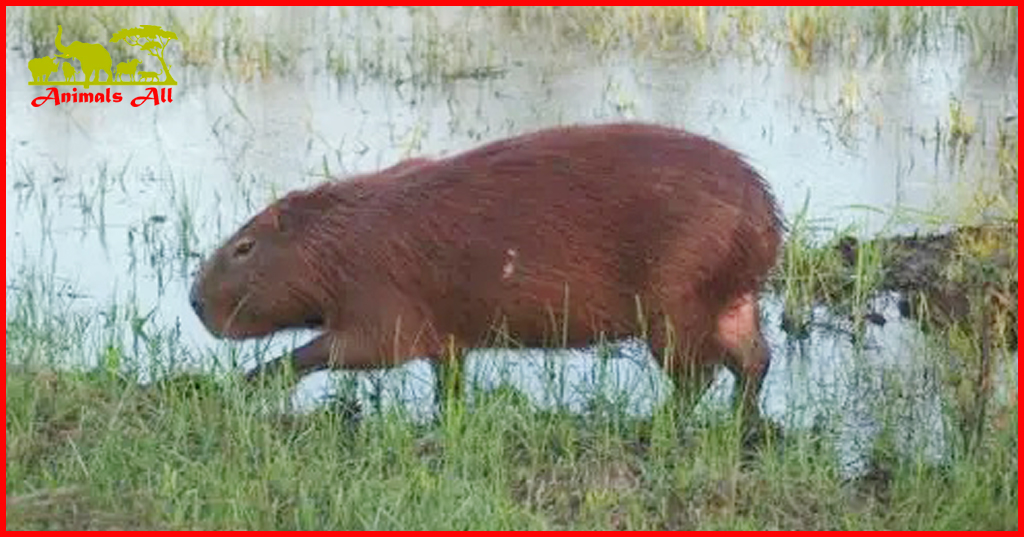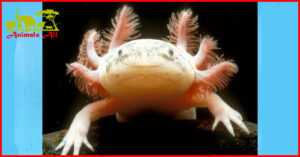
What do you know about capybara ? Amazing info
Capybara ( Hydrochoerus hydrochaeris ) is a species of animal in the genus Capybara, family Caviidae . The largest rodent, weighing 35 to 66 kg, 0.6 m tall at the shoulder and 1.2 m long. Female capybaras are slightly larger than males, with barrel-shaped bodies, shorter front limbs than hind limbs, webbed feet between toes, and no tail. Capybaras have large heads and short necks, with eyes, ears, and nostrils located on the top of their heads, two pairs of large incisors in the front of their mouths, and well-developed masseter muscles. Their fur is rough and thin, mainly reddish-brown, with yellow-brown underbelly and sometimes black on the face. Males have scent glands for individual identification.
Capybaras are dependent on water sources for their habitat, preferring floodplains and swamp edges, but are also adapted to dry forests, scrublands, and grasslands in South America.
The distribution range includes Colombia east of the Andes, Venezuela, Ecuador, Peru, Guyana, all of Brazil, eastern Bolivia, Paraguay, Uruguay, and northwestern and eastern Argentina.
Capybaras are adept swimmers and divers, and mainly eat grass and aquatic plants. They usually move in family groups of 3 to 30 individuals. The average lifespan in the wild is 6 to 10 years. The age of sexual maturity is 1.5 to 2 years. They can breed all year round, with a gestation period of 15 to 18 weeks and a litter size of 2 to 8 pups.
In 1996, the capybara was listed in the IUCN Red List of Threatened Species, ver. 3.1, as a low-risk species with no need for special protection. It was listed as Least Concern (LC) in 2008 and 2016 respectively.

Discovery and naming
Capybaras were first sighted and recorded by explorers in 1541 (Oviedoy Vad’e, 1959). Capybara was first described by Linnaeus in 1766 and named Capybara. In 1820, Humboldt documented the consumption of both salted and raw capybara meat by Indians living along the Orinoco River.

Morphological characteristics
The capybara is the largest rodent, with adult capybaras weighing between 35 and 66 kg, standing about 0.6 m tall at the shoulder and 1.2 m long. Female capybaras are usually slightly larger than males, with a barrel-shaped body and no tail.
Head
The capybara’s eyes, ears, and nostrils are located on the top of its head. It has small, round ears, relatively large eyes, a flat nose, and large nostrils.
Teeth
Capybaras have a unique dental structure, with two pairs of large incisors in the front of their mouths, a pair of premolars in the middle, and three pairs of molars. They have well-developed masseter muscles, which not only help open and close the lower jaw, but also allow the lower jaw to protrude forward, making it more flexible and efficient when biting food. Male capybaras have a well-developed scent gland on their face, while females have almost none.
Limbs
The capybara’s front legs are slightly shorter than its hind legs. It has four toes on its front legs and three toes on its hind legs, with webbed toes between the toes.
Fur
Capybaras have a coarse, thin coat and are reddish-brown for most of their body, with a yellowish-brown belly and sometimes black on their face.
Habitat
Capybaras are strictly dependent on water sources, preferring flooded grasslands, swamp edges and lowland forests. They can also survive in dry forests, scrublands and grasslands in South America.
Region
The capybara has a wide range, covering Colombia east of the Andes, Venezuela, Ecuador, Peru, Guyana, all of Brazil, eastern Bolivia, Paraguay, Uruguay, and northwestern and eastern Argentina.
Living habits
Foraging behavior
Capybaras are herbivores, eating primarily grasses and aquatic plants, and occasionally tree bark and fruit. Because aquatic plants have low nutritional value, capybaras spend most of their time eating. Occasionally, they will go ashore and mingle with livestock to steal the herders’ grass, and even destroy fruits, vegetables, rice and other crops grown by humans. Similar to rabbits, capybaras eat their own feces to absorb the nutrients in them. This food usually goes through a three-stage cycle of digestion, defecation, and feces consumption. Capybaras also chew on hard plants to sharpen their teeth as their incisors continue to grow.
Cluster behavior
Capybaras can live either solitary or in groups, depending on habitat and hunting pressure. Most capybaras live in groups, which consist of 2 to 4 adult males, 4 to 7 adult females, and cubs. The group has a clear hierarchy, and the alpha male is usually the heaviest in the group. The alpha male enjoys the best resources, but also needs to protect other members. When there is danger, he will make a sound similar to a dog barking to alert the group. During peak feeding times, a female capybara will act as a “babysitter” to look after the young while the rest of the adults forage for food.
Communication Behavior
Capybaras communicate through sounds and smells, including barks, screams, whistles, chirps, and neighs, conveying different messages. If they detect danger, they will bark to warn others, and the entire group will quickly flee into the water. Cubs use purring to stay connected to their mother and the group. In addition, capybaras use scent to mark their territory and attract mates, using scent glands and urine to smear surrounding objects to exchange information.

Growth and reproduction
Growth characteristics
The average lifespan of a capybara is 6 to 10 years in the wild, and up to 12 years in captivity. They reach sexual maturity at 1.5 years of age and weigh 30–40 kg.
Reproduction method
Estrus mating
Capybaras are polygamous or promiscuous, and their peak breeding season usually coincides with the rainy season. Due to the different timing of the rainy season, the breeding months are not uniform. Capybaras in areas such as Venezuela and the Brazilian Pantanal can breed year-round, but usually have only one distinct breeding cycle. Males and females in estrus mark each other with urine. Changes in the scent of females in estrus trigger male pursuit. Capybaras usually mate briefly in water, but can also mate out of water.
Pregnancy and Breastfeeding
The gestation period is about 150 days, and one litter is born each year, with 1-8 cubs in each litter. A few hours after giving birth, the female returns to the water, and the cubs join the group after they become independent. The cubs can eat grass within a week after birth, but they will accept breastfeeding within 16 weeks. Breastfeeders are not limited to their biological mothers, but also include closely related females in the group.
Raising cubs
Young capybaras live with their parents until they are about one year old, and rely mainly on breastfeeding for the first three months. Before and after weaning, the young capybaras move around in nurseries, where the adults raise them together. Because of their small size and slow movements, young capybaras are vulnerable to predation, so group protection is essential. Their early maturity and collective parenting system reduce the burden of parenting on their parents.
Artificial breeding
Breeding qualifications and environment
Raising capybaras requires relevant qualifications and the application for relevant licenses from local forestry authorities. Capybaras are highly adaptable, but sensitive and timid. When raising capybaras artificially, a fixed keeper should be used to avoid frequent changes of personnel and environment. It is better to choose low-fat and low-lactose goat milk powder as a milk substitute. Because capybaras grow teeth at birth and love to chew, it is necessary to carefully check whether the feeding device is damaged when feeding to prevent the capybara from swallowing foreign objects.
Feeding and management
Capybaras start to gnaw at around 6 days old, and complementary foods can be added at 7-10 days old. The complementary foods should be added from single to multiple, from small to large, and the feeding frequency should be changed from frequent to frequent, and should be adjusted in time according to the capybara’s digestive conditions. The room should be cleaned daily, disinfected regularly, and air circulation and a good breeding environment should be maintained to ensure that the capybara has a balanced diet and sufficient sunlight.
Conservation status
Protection Level
In 1996, the capybara was listed in the IUCN Red List of Threatened Species, ver. 3.1 – Low Concern or Least Concern, and was listed as Least Concern (LC) in 2008 and 2016.
Population status
Capybaras are widespread in the Amazon, but avoid densely populated areas, primarily inhabiting open waterfronts in the rainforest. Their range depends on the availability of resources: 10 hectares in resource-rich areas, but may exceed 200 hectares in resource-poor areas. In the Brazilian Pantanal, capybara populations can reach densities of 15 per hectare, while in central Bolivia, densities range from 0.4 to 0.59 per kilometer. [1]
Causes of endangerment
The decline in capybara numbers is mainly due to the large-scale hunting and consumption of capybaras by humans, and the fact that their young are an important source of food for predators such as anacondas, caimans and jaguars.
Protective measures
Colombia and Venezuela have passed laws to ban the hunting of capybaras. After a hunting management plan was implemented in 1973, the capybara population has resumed growth. In addition, relevant countries and regions have established several protected areas within the capybara’s distribution range.
Main Value
Ecological Value
In many parts of South America, capybaras are the only large herbivores that have a significant impact on vegetation, promoting vegetation renewal. They are symbiotic partners of many bird species and are also the main food source for many predators, maintaining the food chain and ecological balance.
Ornamental value
Capybaras are gentle and suitable for close contact, so they are popular in zoos. Their cute appearance also makes them highly ornamental.


2 thoughts on “What do you know about capybara ? Amazing info”
Comments are closed.